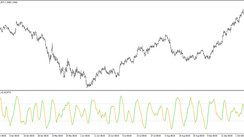Understanding Breakout Trading
Breakout trading involves capitalizing on the opportunity when a trading asset has surged past its defined support or resistance levels. Often seen as an indicator of a switch in trend, breakouts can be a lucrative moment in the market for profit-seekers. However, they can also suggest reversals, or be false alarms, implying inherent risks. Therefore, breakout trading involves a strong stop-loss strategy to mitigate losses and gain profits when the market conditions are favorable.
The Breakout Trading Mechanism
Breakout trading generally adheres to the following steps:
Step 1: Identify Support and Resistance
The key resistance and support levels for an asset form the baseline to start the process of breakout trading. Historical price trends serve as a good guide to map these levels.
Step 2: Ascertaining the Breakout
Once price breaches a prominent level, it gives an opportunity to initiate a trade in the direction of the breakout.
Step 3: Execute Stop-loss Orders
Setting stop-loss orders is an essential practice to cut down on losses if the breakout is a dud.
Step 4: Book Profits
If the trading scenario leans in your favor, it’s ideal to book profits by closing the trade.
Recognizing a Breakout
Signs of a breakout could include a surge in volume associated with the breakout candle or the price exceeding the day's maximum or minimum. A gamut of tools that can help spot a breakout are:
- Moving Averages: These are good tools to spot trends and resistance/support levels.
- Bollinger Bands: These can help identify when a stock is overbought or oversold.
- Relative Strength Index (RSI): RSI helps to identify overbought and oversold conditions.
- Stochastic Oscillator: Used to highlight overbought and undersold scenarios.
Although breakout trading can be applied across various assets like stocks, currencies, and commodities, it is perhaps more applicable to a trending asset than a range-bound one.
Expert Views on Breakout Trading
The effectiveness of breakout trading remains a debatable topic among experts. While some find it profitable, others ward off due to its associated risks.
Conclusion
Breakout trading, although demanding in nature, can reap profitable results for dedicated traders. A clear understanding of its nuances aids traders in deciding if this strategy suits their risk appetite.





